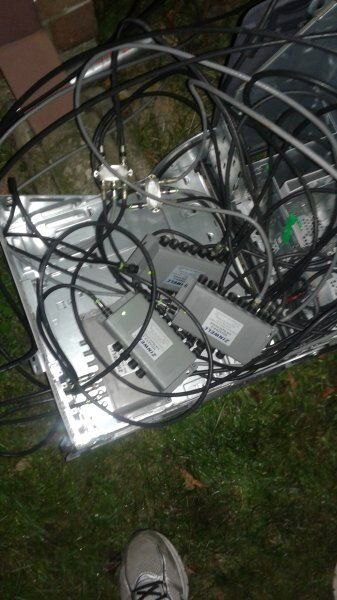How do you handle the 13/18V from each receiver or is that not a problem?
If, say, I have receiver one on a vertical channel on satellite A and I switch receiver 2 the same satellite, what happens? If it's vertical, do both receivers see vertical? If it's horizonal, does the LNB switch and receiver one ends up looking at a horizontal signal? I'm concerned about overloading things if all these receivers are sending LNB voltage down the cables, although I guess it's all in parallel so it shouldn't be a huge problem.
That is what the multi switch is for. The multi switch handles all that. All the receivers plug into the multi switch. The most common are 4 receiver inputs and 8 receiver inputs. The ones on my storage containers are 4 receiver inputs. The multi switch expects the voltages from the receivers to know which LNB ports to send you through too. The multi switch has 4 outputs to LNB's 13/18 22khz off 13/18 22khz on. All of your LNBS need to be dual output. So, one is always in the vertical and one is always in the horizontal. With this setup any person on any of the 4 receivers can watch any channel independently no matter what the voltage polarity is and no matter when its 22khz on/off.
Then by putting a diseqc 1.1 switch between each receiver and the multi switch, you can then have each receiver access up to 8 Multi Switches independent of any of the other receivers. So, any receiver(TV) can watch any channel on any satellite on any polarity independent of any other receiver(TV). In one word , "SLICK"

I will also add that all of this can be done without a multi switch, but then you would have to have the same number of LNB coax outputs as the number of receivers you wanted. SO, if you wanted to have 4 receivers, then all your satellites would need to have quad output LNBFs, and then you would need to use Diseqc switches and/or 22khz switches to jump to the individual LNBFs. I think this route is a bit more expensive, and requires more cabling to the dishes.


